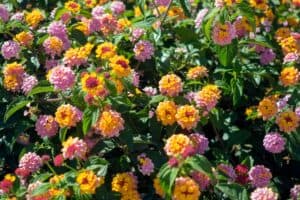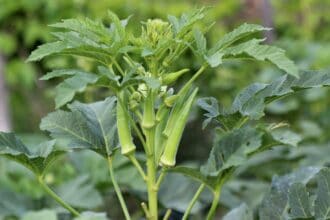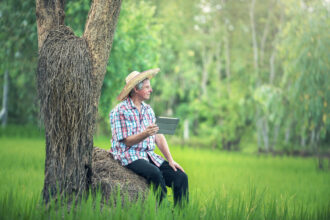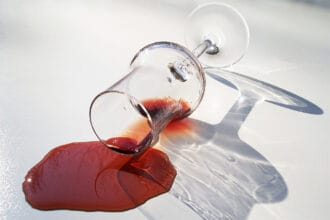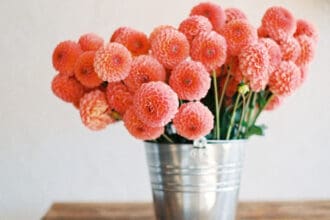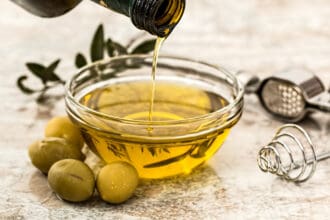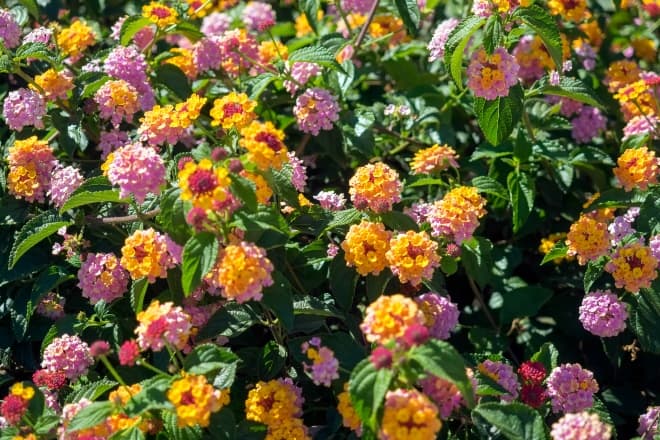
via: Depositphotos / YAYImages
With the continuous effect of climate change on water shortage, plants that can survive dry seasons are making it to the spotlight. Being able to survive long dry spells, these drought tolerant plants are a must in your garden or indoors.
With my gardening expertise sought after websites such as Constant Delights, I have the perfect list of plants that like full direct sunlight to help you turn your dry gardens into an oasis.
Read on and be ready to get your hands dirty.
Contents
What are Drought-tolerant Perennials
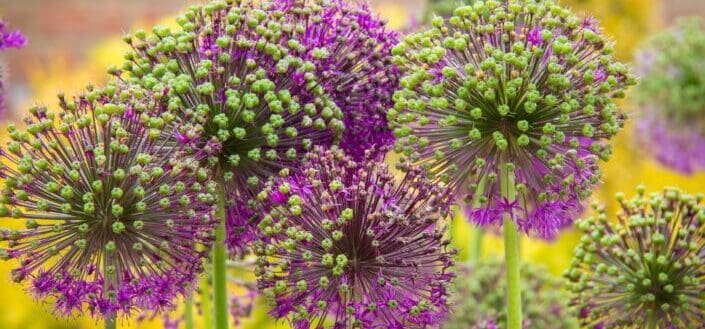
via: Unsplash / Richard Loader
Drought tolerant perennials can withstand long periods without much water and survive even during a drought. These are favored over other plants in places that suffer long dry spells. These plants have special features and adaptations that help them survive this extreme condition.
Characteristics
One characteristic of drought-resistant plants is smaller leaves, some even growing needle-like leaves to prevent water loss. A great example of this is the cactus. Cactuses develop thorn-like leaves both for water conservation and protection from thirsty animals. The smaller the surface area, the less water is lost during transpiration. Transpiration is the loss of water through the stomata in the leaves of plants.
Another thing you'll notice on the leaves is the thick cuticle or wax layer covering them, especially those plants that have broad leaves. This wax covering minimizes water loss. Some have hair-like structures surrounding the leaves mainly to trap moisture. The roots of these plants grow long and deep to reach water tables, while some grow theirs horizontally to absorb surface water. These adaptations help the plants remain green all year round.
Where do they grow
These plants grow in hot and very dry environments. They grow best in soils that are dry and even dusty or gravelly. Although they need very minimal watering, they need to be hydrated when first planted.
10 Most Popular Plants That Can Survive Through Dry Season
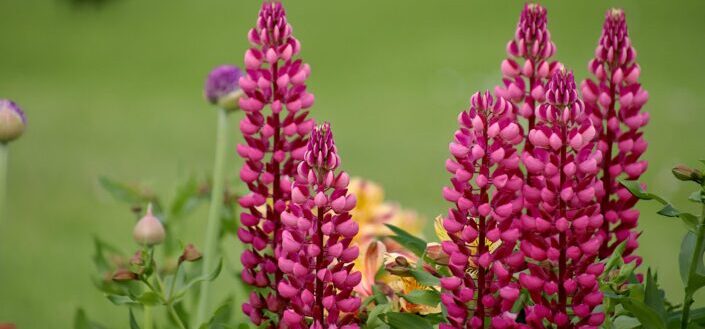
via: Pixabay / GAIMARD
If you want your garden blooming with life even in extreme heat, these are just some plants that, like full direct sunlight, you can grow.
1. Lavender
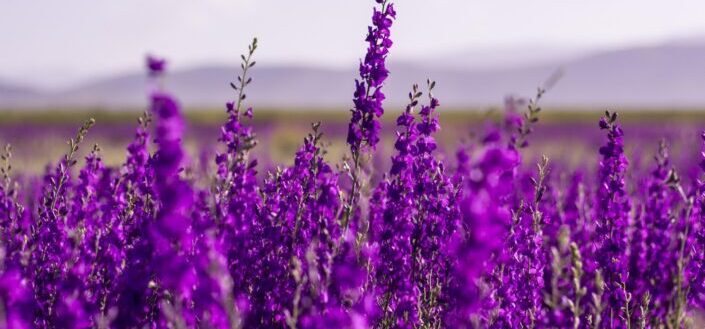
via: Pixabay / kucukgulberkan
This sun-loving plant produces lovely flowers that emit a calming scent. Lavenders are great for gardeners who don't want much maintenance work. They grow as hedges that can be decorative in your garden. Lavenders need little watering and can survive both drought and frost.
2. Yarrow
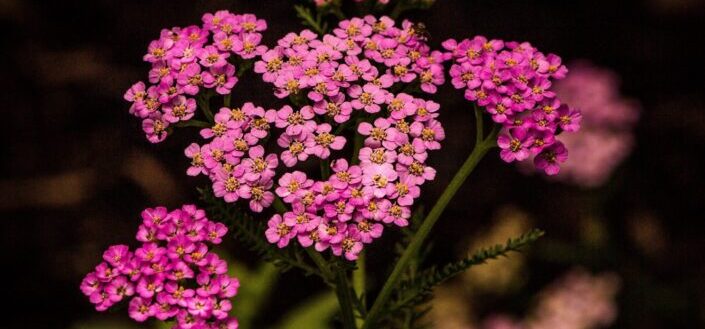
via: Pixabay / JamesDeMers
Yarrows are medicinal herbs that you can grow with very minimal supervision. They prefer well-drained soil and can grow in very dry and sandy soil. Yarrows are decorative plants that can add a touch to your home. A word of caution, though, yarrows can become an invasive herb, so once you notice it growing out of control, you better do something about it before it takes over your garden.
3. Echinacea
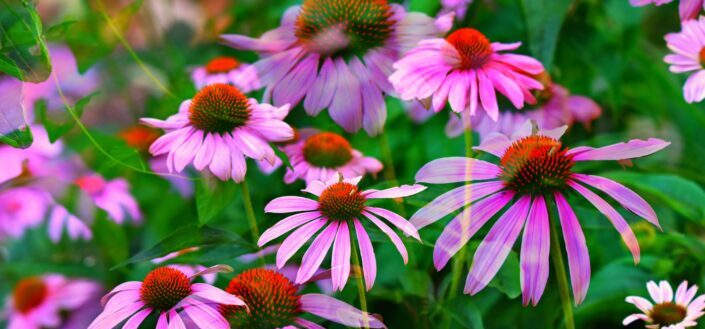
via: Pixabay / MabelAmber
Echinacea, or the purple coneflower, is a native of North America. The majestic flowers of this plant will make colors pop in your garden. It can survive dry summers and cold winters. Proper watering is required when establishing this plant in your garden for the first time. But once it has settled, minimal watering is needed.
4. Coreopsis
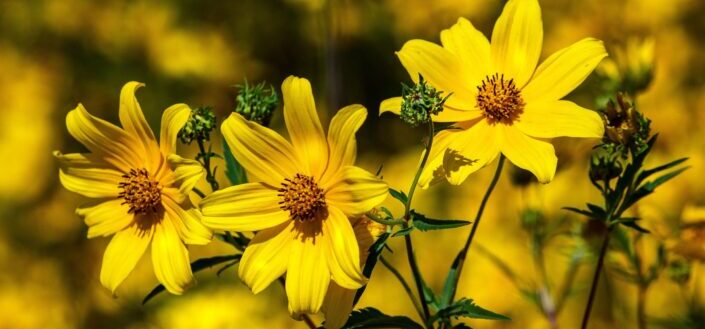
via: Pixabay / JamesDeMers
Threadleaf coreopsis is a perennial plant guaranteed to grow well in well-drained, dry soil. It can survive even in poor and sandy soils. It produces golden yellow flowers that can brighten up any dry, dull garden when in full bloom. They're very chill plants that thrive when left alone.
5. Golden Marguerite Daisy
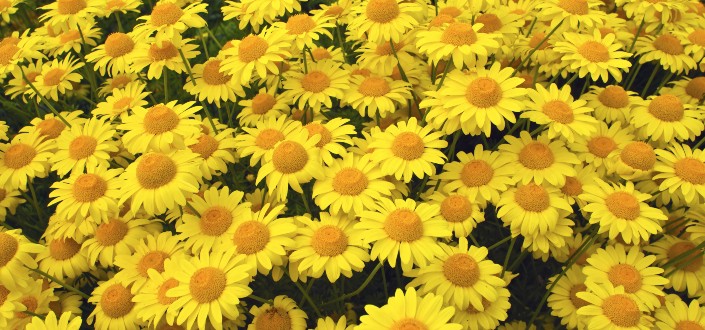
via: Depositphotos / Debu55y
One of the famous types of yellow plants is the golden marguerite daisy which can be very similar to coreopsis. It blooms with daisy-like flowers and has leaves that have a faint aroma close to the smell of chamomile. They can grow in poor soils and even survive in sandy or chalky soil than in very wet soil.
6. Allium
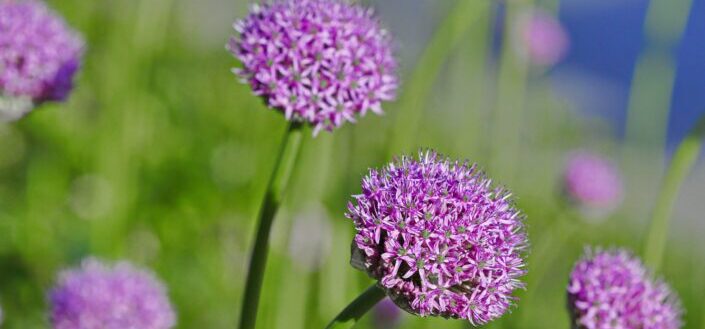
via: Pixabay / sharkolot
Alliums come in different shades and colors and do not require much tending. Garlic and onion are among the Allium species that can be grown at the edges of garden plots and beds as it is resistant to rodents and deers. They also flourish under direct sunlight and well-drained soil, perfect for dry gardens.
7. Butterfly Bush
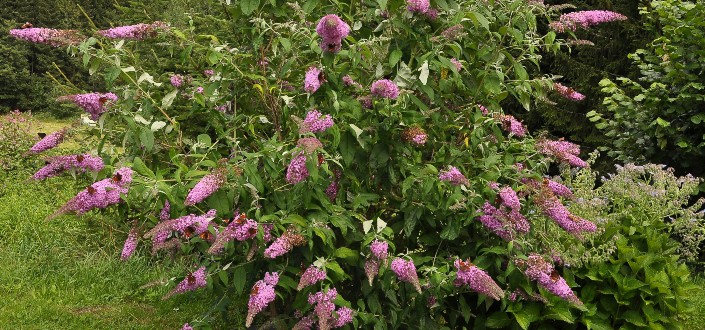
via: Depositphotos / lantapix
These plants' success in thriving and spreading results from their ability to survive in extreme heat. So much that they are considered invasive in certain areas, but not to worry, hybrids have been developed to resolve this problem. Butterfly Bushes got their name because they attract butterflies, bees, and hummingbirds. So if you want to make your dry garden full of life, add this to your patch.
8. Malva sylvestris
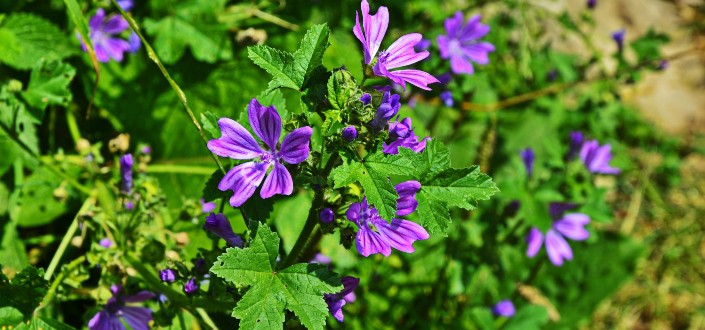
via: Depositphotos / weha
The bright rose-purple flowers of this plant are an eye-catcher. They fully bloom in the late spring or early summer as it best grows when exposed to full sunlight. They are tough plants that can tolerate heat and dry and poor soil. They grow as bushes, so they are perfect for cottage gardens or used as borders.
9. Russian Sage
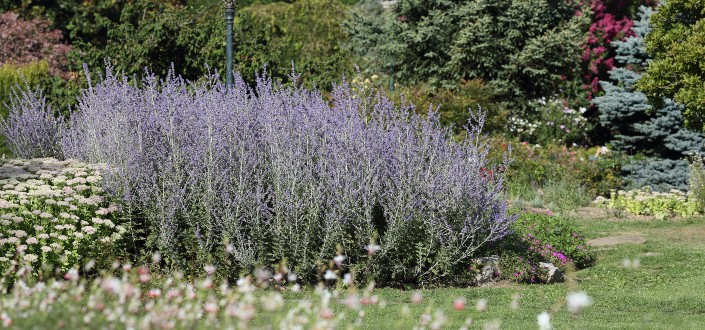
via: Depositphotos / PantherMediaSeller
Despite its name, the Russian sage is not a sage but a mint family member. These plants grow in warm climates and need full sunlight for flowering; they are perfect for adding to your garden as it blooms purple flowers in the summer until fall. It thrives in dry and less fertile soil but can tolerate even clay soils as long as it is well-drained.
10. Catmint
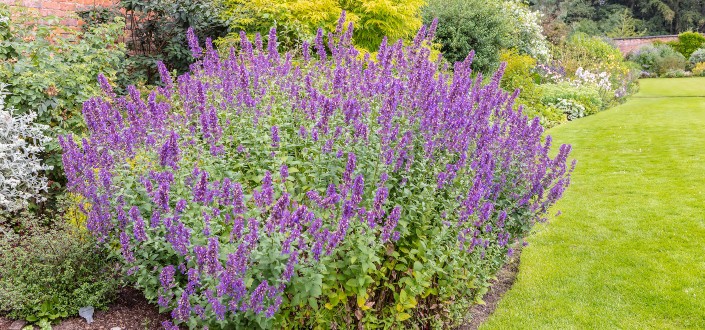
via: Depositphotos / Debu55y
Catmints are sun-loving plants from the mint family. Its green foliage and vibrant blue to purple flowers make the catmint a must-have plant, especially if your garden has dry soil. This plant is not only resistant to drought but is also resistant to pests and diseases. They don't thrive well in very fertile soil. Given enough space and even under partial shade, catmints can grow full and wide.
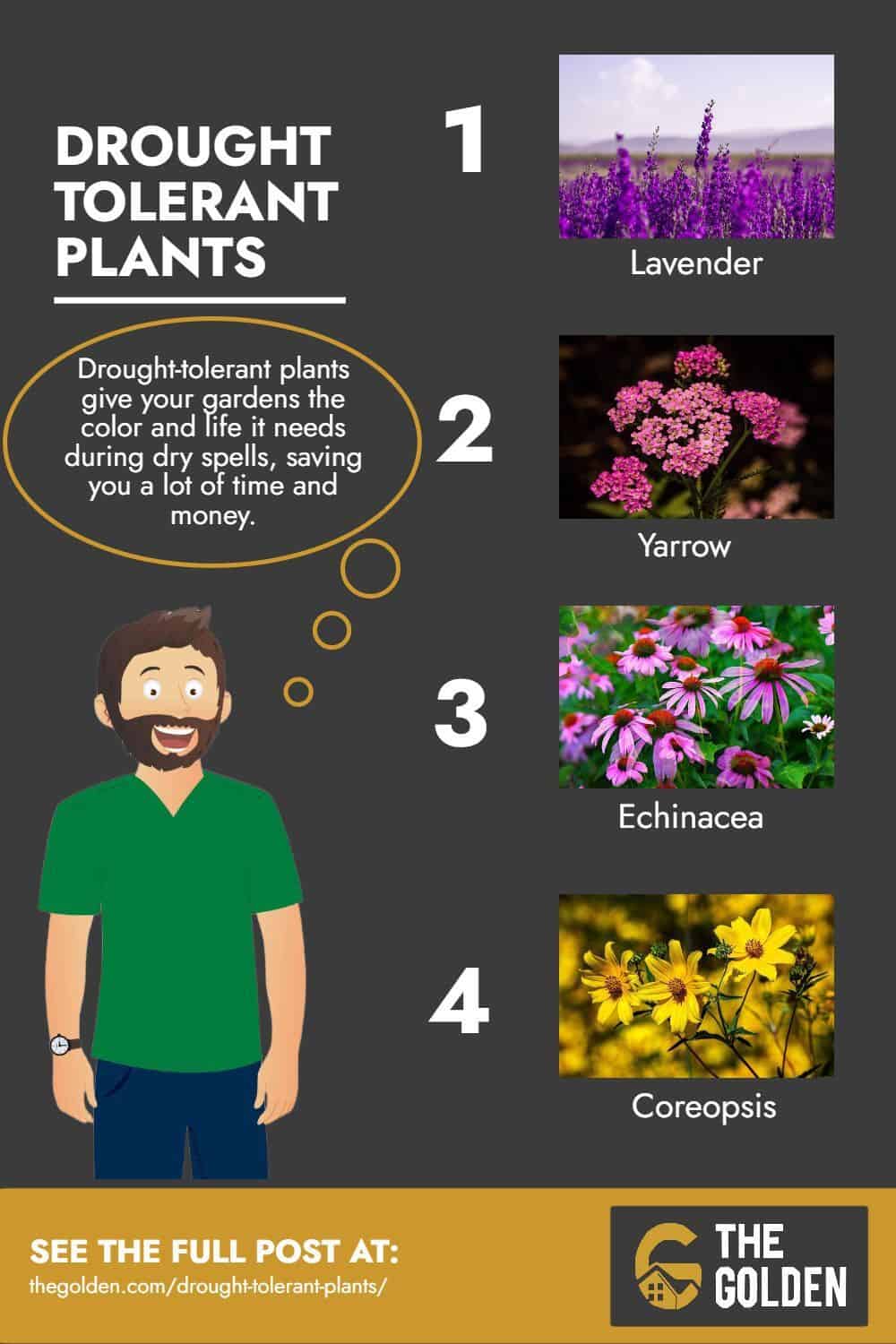
via: TheGolden
Share This Image On Your Site
How To Take Care of Your Plants To Make Them Look Good Even On Dry Spells
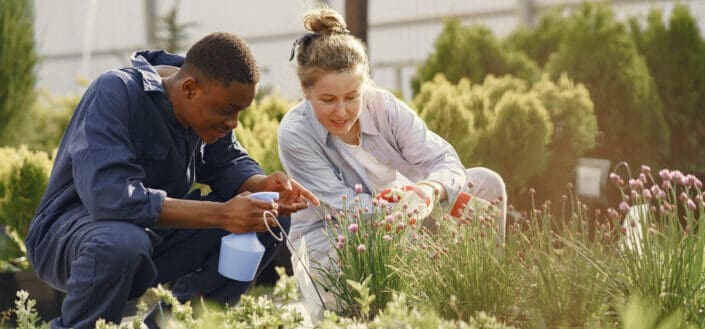
via: Pexels / Gustavo Fring
For plant lovers, extended periods of drought can be a tough time. But never worry cause there are several ways to make sure your gardens survive the dry spell and still look good.
>
Step #1: Use mulch.
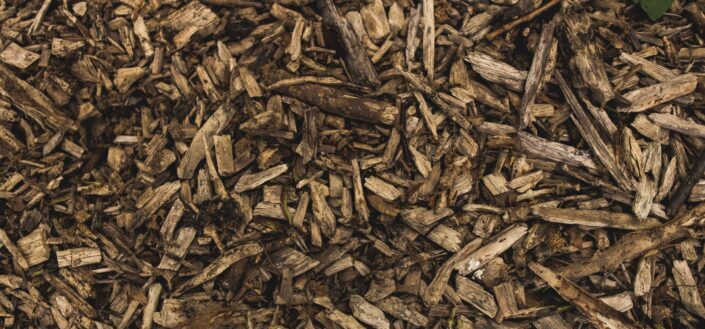
via: Unsplash / Paul Green
Cover the soil with dry leaves, discarded cardboard, barks, or other organic materials. This helps the soil retain its moisture and slow down evaporation.
Step #2: Deep watering.
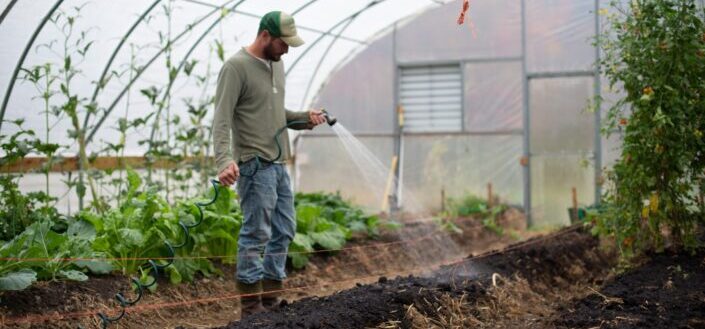
via: Unsplash / Zoe Schaeffer
Watering deeply can do more good for your plant and can save you from the cost of frequent watering. This way, you do not need to water your plants very often.
Step #3: Schedule your watering.
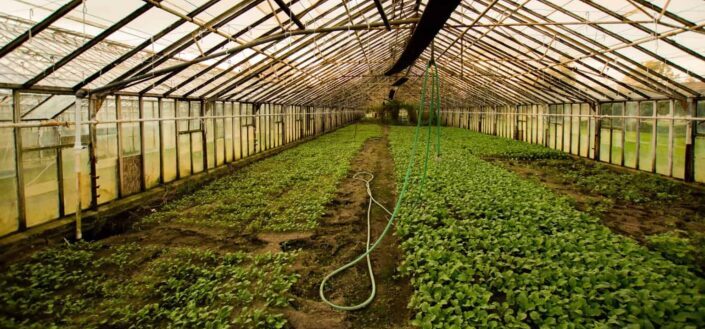
via: Unsplash / Abigail Lynn
The rule is to water your plants before 8 am. Never do it at noon or when there's scorching heat as it will be a waste of water.
Step #4: Dust the leaves.
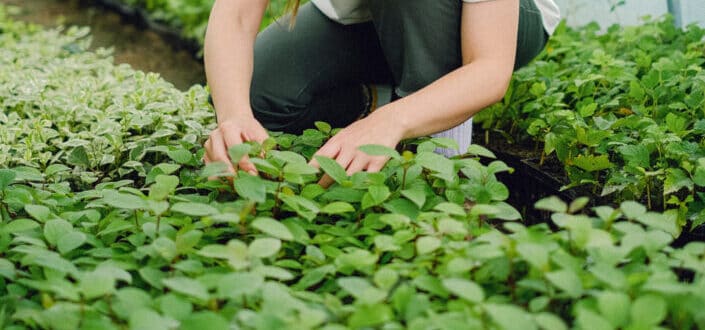
via: Pexels / Anna Shvets
During the dry season, dust can accumulate on the surface of the leaves of larger plants. Grab some moist towels and remove the build-up on the surface. This will make your plants look healthier.
Frequently Asked Questions
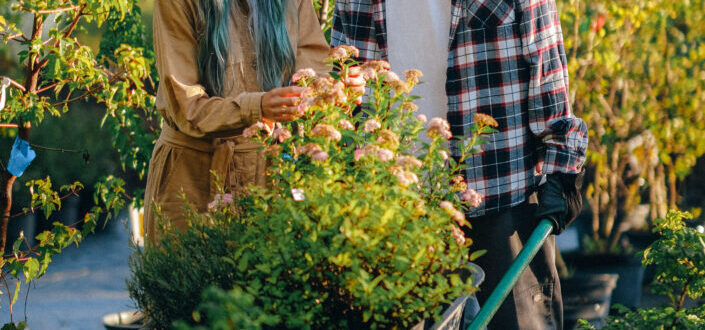
via: Pexels / Anna Shvets
There's more to these vegetations than being branded as plants that don't need water. Here are some answers to common questions about heat-loving perennials.
What makes these perennials great for dry gardens?
Perennials are great for dry gardens because they make them look more lively. It would mask the parched area of your garden and still make them stand out. You can make your dry garden look like an oasis with shrubs, flowering plants, and succulents, creating an evergreen garden without too much watering.
Can you grow drought-tolerant perennials indoors?
You can. You have to consider putting them under the sun or where they can get enough good sunlight. They can serve as decorations on shelves, and since they need very little watering, you don't have to worry about them all the time. Just make sure to let them have some direct sunlight from time to time.
Are drought perennials good for decorations?
Most drought-resistant plants bloom with colorful flowers, especially during dry periods. So yes, they can be very good decorations. If you want your garden to be a head-turner, add some of these plants to liven it up.
What's your best advice for someone growing a garden in a drought?
Practice drought-tolerant landscaping. This includes establishing plants that can survive a drought. There are no use growing plants that cannot withstand dry soil. Know when to water them and the amount of sunlight they need so you have an idea where to place them in your garden. Lastly, make sure you have well-drained soil so your plants don't get soggy, rot, and die.
More Interesting Articles to Explore
If you want to know more about plants with high drought tolerance that you can grow at home, here are some more articles.
- Thinking about creating a whole different vibe for your garden? Read on what outdoor succulents to plant.
- Even without a large garden, you can still show off your succulents inside your home. Learn more about indoor succulents.
- Want to cultivate one of the most loved succulents? Learn about how to grow elephant bushes.
Conclusion
Gardens should never be boring just because they are dry. Plants that can tolerate drought can be the thing that can turn your garden around during long, dry conditions. They are very decorative plants that bloom with flowers that can instantly beautify your garden and home.


